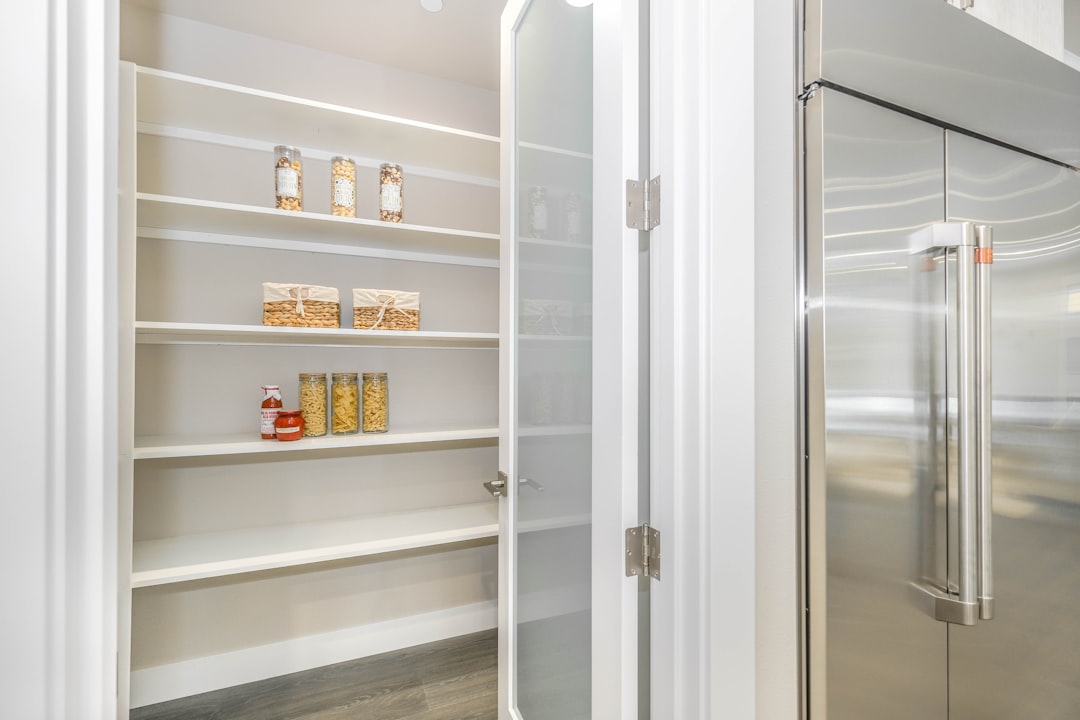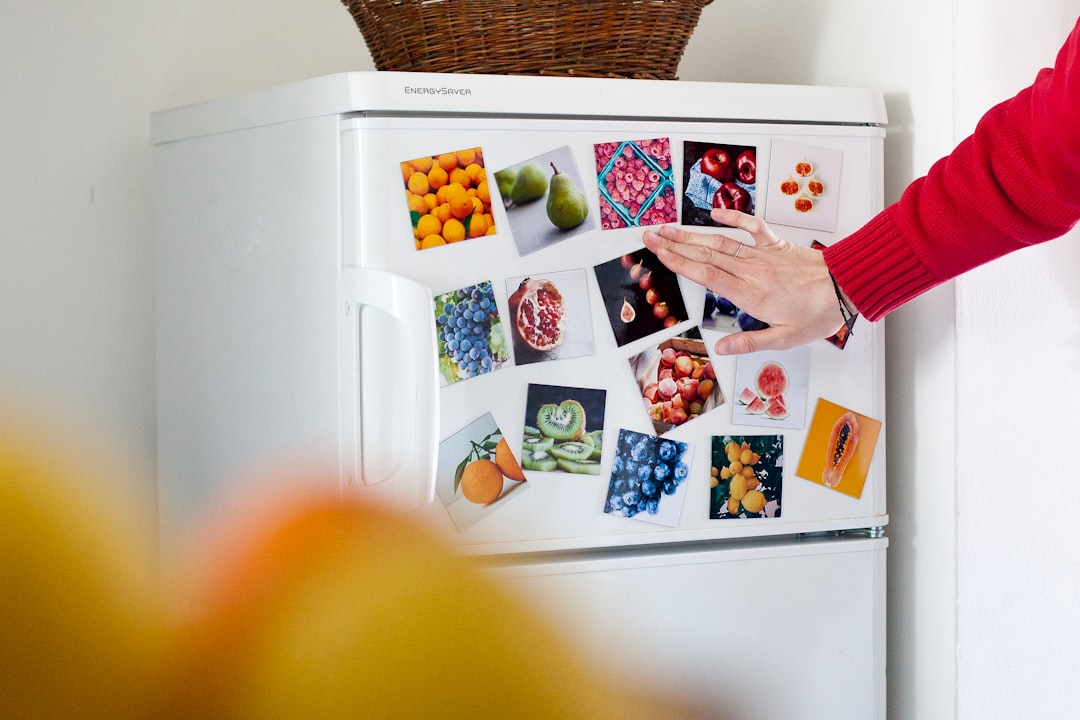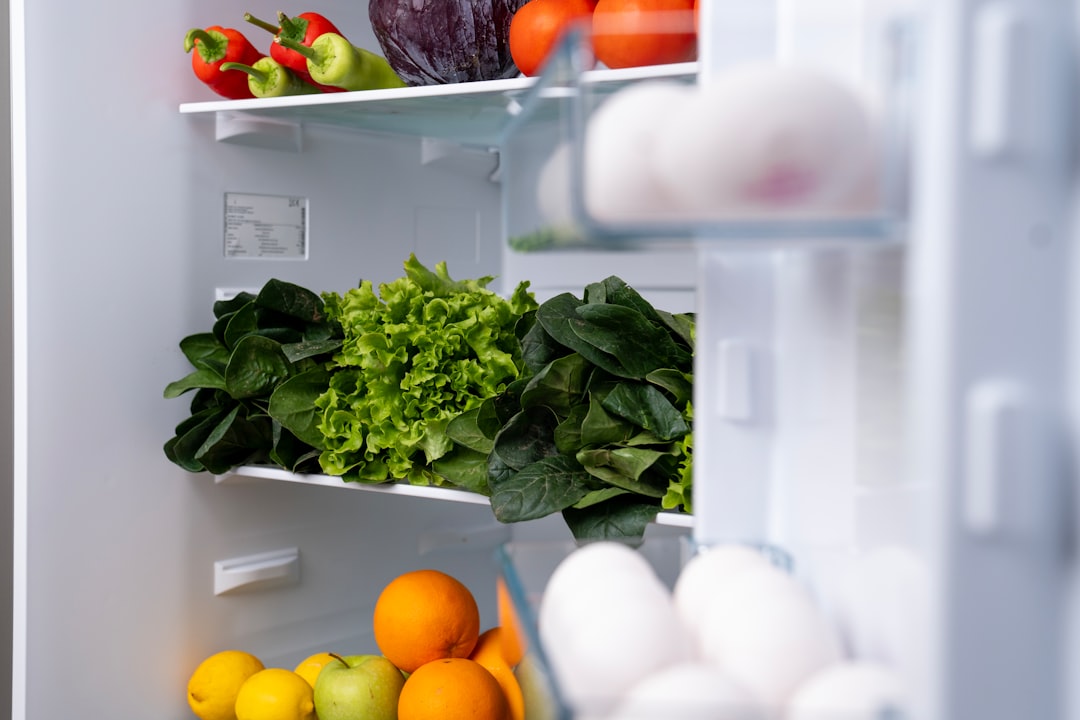

Engage prospects with a scan and streamline customer engagement with FREE QR code marketing tools by Sona – no strings attached!
Create a Free QR CodeFree consultation

No commitment

Engage prospects with a scan and streamline customer engagement with FREE QR code marketing tools by Sona – no strings attached!
Create a Free QR CodeFree consultation

No commitment
QR codes have evolved from a novelty to a strategic powerhouse in bridging offline engagement with online action. For refrigerator repair services, QR codes offer a frictionless way to connect homeowners, property managers, and commercial clients with immediate digital support: no app download or complex setup required. Whether facing a refrigerator breakdown or planning routine maintenance, a quick scan creates a seamless transition from physical assets to expert help and troubleshooting resources.
Refrigerator repair providers often lose high-value prospects because traditional outreach such as flyers or business cards does not translate into trackable leads. Missing or anonymous contacts mean businesses may not realize who tried to reach out until it is too late. QR codes streamline everything from booking appointments to providing maintenance tips, troubleshooting, or sharing emergency contact details. These scannable codes replace outdated analog processes, such as service flyers or handwritten warranty cards, with interactive journeys that reduce confusion, deliver visibility into every interested customer, improve experience, and provide measurable business outcomes.
This guide explores how QR codes can be strategically deployed in refrigerator repair services to reduce friction, address gaps in lead capture and engagement, and enable real-time access to critical information and services for both customers and service teams.

QR codes bridge the gap between physical touchpoints and digital outcomes, making it easier to achieve goals such as faster emergency repair response, increased lead capture, and improved customer satisfaction. When a refrigerator stops cooling or starts making noise, urgency is everything. A visible, well-placed QR code removes search time, reduces call center backlogs, and initiates the right digital action in seconds.
Providers struggle with late lead capture because waiting for forms to be filled or calls to be returned often results in slower response and lost business. QR codes revamp this process by transforming common, static materials into real-time service channels and by capturing engagement signals the moment a customer shows intent. Replacing paper manuals, phone intake, and voicemail tag with self-service flows makes help immediate and trackable.
By replacing slow, analog processes with modern, self-serve QR workflows, repair providers reduce missed leads and enable real-time engagement. A robust QR platform like Sona QR brings code design, dynamic destinations, tracking, and CRM sync together so every scan fuels faster service, smarter marketing, and better customer outcomes.

Refrigerator repair services face classic offline-to-online friction: customers see a sticker, mailer, or card, but there is no fast, digital way to get help. Someone may keep a magnet on the fridge or a card in a drawer, yet when the fridge starts leaking at 9 p.m., the path to assistance is unclear. These missed, high-intent moments mean leads remain anonymous and sometimes never progress, and response times suffer because the first point of contact is a voicemail or a generic email inbox.
QR codes let users instantly book a repair, access DIY troubleshooting, or request a quote at the moment of need and without searching or manual entry. Scans can route to triage forms, contextual troubleshooting videos, or a priority hotline based on time and location. This path increases conversion likelihood, accelerates dispatch, and ensures engagement signals are captured early, enabling timely outreach and proactive service updates.
Dynamic QR codes add vital flexibility for this industry. Need to update a seasonal special, a temporary emergency number, or a holiday schedule without reprinting labels and mailers? A dynamic code makes it possible. Real scan data also guides resource allocation: a spike in scans from a specific zip code might signal a heatwave-related surge in repair requests, prompting staffing changes or inventory prep. For refrigerator repair teams, QR codes are not just links; they are a real-time feedback loop that supports faster service, stronger retention, and profitable growth.

Refrigerator repair companies can use several QR formats to support different customer needs and internal workflows. Selecting the right format ensures that the scan leads to the simplest, most effective action for that scenario and device. Most campaigns benefit from using more than one format so every touchpoint is optimized for the behavior you want to drive.
For refrigerator repair, web links, vCards, and interactive troubleshooting forms deliver the most day-to-day value. Use static QR codes for content that will not change, like a permanent help video. Use dynamic QR codes for campaigns needing updates or detailed tracking, such as scan-to-book on stickers and seasonal promotions.

Growth in refrigerator repair often comes from capturing the right customer at the exact moment they need help. QR codes should appear wherever customer interaction and potential for missed opportunity occur. The practical goal is simple: remove uncertainty, shorten time to action, and make every scan measurable so you learn which channels perform.
Start by mapping your typical touchpoints: service calls, invoice handoffs, warranties, and local advertising. Then, layer QR codes onto each, ensuring that the destination matches the context. For example, a QR on a service sticker should not go to a generic homepage; it should open a booking form that pre-fills known data and offers emergency options.
Maximizing every interaction ensures no opportunity is missed due to anonymous or untrackable behavior. Over time, scan patterns help you double down on the media that delivers the most bookings and highest-value clients.

Use cases should focus on moments that either lose momentum or create unnecessary friction. The best QR applications remove those roadblocks while capturing data you can use to improve service and marketing. Even simple scans can unlock outsized results when designed with clear intent.
Consider which interactions you repeat most often and where questions pile up. Then convert those moments into QR-enabled workflows that guide customers step by step. Keep destinations mobile-first, fast to load, and tailored to the asset the user just scanned.
These three use cases address core pain points: late or missed lead capture and incomplete account data. By enabling real-time engagement and transparent tracking, they transform scattered, analog interactions into connected journeys that convert faster and retain better.
Every refrigerator repair QR scan provides insights about intent and stage: who scanned, what they scanned, when they scanned, and whether it suggests an emergency or planned maintenance. Many providers fail to organize this information, leading to generic or late retargeting that underperforms. With unique codes for each touchpoint, you auto-segment your audience and tailor follow-up at peak interest.
Think of your funnel as a series of QR checkpoints. A flyer scan is not the same as an invoice scan, and an after-hours sticker scan deserves a different response than a weekday brochure scan. When scan data flows into your CRM, your team can act with precision instead of guesswork.
Further segmentation refines your strategy. For example, create separate audiences for homeowners versus property managers, residential versus commercial kitchens, new customers versus warranty registrants, and emergency scans versus planned maintenance. When scan data syncs to your CRM and ad platforms, your messaging can reflect real behavior and timing: SMS for urgent scans, email nurture for non-urgent research, and intent-driven retargeting for quote seekers who did not book.
QR codes unify offline and online campaigns for refrigerator repair services. Without proper integration, channels remain siloed, attribution is fuzzy, and ROI is hard to defend. A connected QR approach gives every print piece, field touchpoint, and service document a measurable call to action that moves customers forward.
Plan your marketing calendar with QR placements baked in. Treat each code as a trackable onramp to the right destination: one code for emergencies, one for standard scheduling, one for promotions, and one for reviews. Ensure the landing experience reflects the channel and context to maintain momentum from scan to action.
A unified QR system ensures teams can measure, attribute, and act on engagement across channels. With a platform like Sona QR, you can manage all your codes, monitor performance in real time, and sync scan data with your CRM and ad platforms for full-funnel visibility.
A thoughtful QR rollout keeps your team focused on outcomes, not just scans. Start with one or two high-impact use cases, then expand to additional placements once you have learned what customers respond to. Treat the process as a continuous improvement loop: design, deploy, measure, refine.
Below is a practical blueprint for refrigerator repair services. Each step helps you eliminate friction, increase conversion, and generate clean data for decision making. Use it to design campaigns that move prospects from scan to scheduled service with minimal effort.
Decide where the biggest leaks occur in your funnel. Is it urgent calls that end in voicemail, missed follow-ups after service, or untracked responses to neighborhood flyers? Focus on the one interaction that, if fixed, would drive the most impact in the next 30 days.
Match the code type to your goal. If you plan to update destinations or track performance, dynamic codes are the safest choice. If the content is permanent, a static code may suffice.
Design for clarity and scannability. The code must be easy to find and understand, and the surrounding message should promise value in plain language. Poor contrast, cramped placement, and vague CTAs cause lost scans.
Roll out codes where intent is highest and where your current workflow leaves gaps. Prioritize assets that are already in customers’ homes or in the hands of decision makers.
Tracking turns scans into outcomes. Without measurement, you cannot know which placements drive bookings or which messages deserve more budget. Analytics and CRM integration close the loop from scan to revenue.
A disciplined checklist helps you avoid common pitfalls such as vague calls to action or untrackable placements. Use Sona QR to generate, brand, and manage your codes; then use the Sona.com analytics suite to tie scans to bookings, revenue, and retention.
Tracking every QR scan resolves critical issues such as anonymous traffic and lost opportunities. Providers lacking tracking miss conversions and cannot attribute which campaigns drive results. Without identity and source data, it becomes difficult to optimize budgets or staff scheduling around real demand.
Modern analytics lets you observe scan behavior in context: the channel that drove the scan, the time and place it happened, the device used, and what the scanner did next. Over time, these patterns guide better decisions across marketing, operations, and staffing. For example, if emergency scans spike on weekend evenings, you can adjust on-call coverage and ensure parts availability.
Sona QR captures the scan-level details and unifies them in a single dashboard. Sona.com extends that visibility with identity resolution, buyer journey mapping, and multi-touch attribution. Together they connect scans to pipeline and revenue, turning QR initiatives into a core part of your performance strategy.
Once your foundational placements are live, optimize for higher scan rates and stronger conversion. Focus on clarity, convenience, and continuity: scanners need to understand the benefit, see the next step, and experience a fast, mobile-friendly flow. Train your team to promote scanning during service visits and to explain what customers get when they scan.
Choose the tips that fit your media mix and buyer journey. A residential-focused service may invest heavily in appliance stickers and direct mail; a commercial team may prioritize equipment tags, portfolio pricing requests, and event lead capture.
These best practices turn QR codes from convenient shortcuts into a durable growth engine. You will capture demand at the source, shorten response times, and continually improve through data-driven iteration.
QR codes are a strategy, not just a shortcut. For refrigerator repair services, they turn every fridge, receipt, and print asset into a digital entry point that enables instant access to emergency repair, troubleshooting, and support with minimal barriers. The result is a faster, more predictable customer journey that serves people at the moment they need you.
Instead of relying on slow or incomplete processes that lose prospects, QR strategies provide a connected experience and measurable impact. When every scan is tracked and tied to outcomes, you can refine creative, improve operations, and invest in what works.
By integrating QR code technology into refrigerator repair services, providers and consumers gain convenience, faster response times, and actionable insights. Strategic use of QR codes streamlines onboarding and troubleshooting, surfaces hidden demand signals, and drives higher lead capture, optimized marketing spend, and measurable business growth. With a centralized platform like Sona QR to build, track, and optimize your codes, and Sona.com to connect scans to revenue, your team can maximize every touchpoint in today’s competitive, customer-centric environment. Start creating QR codes for free.
QR codes have revolutionized refrigerator repair services by transforming how technicians and customers connect with essential repair information instantly. From simplifying access to troubleshooting guides and service histories to streamlining appointment scheduling, QR codes enhance customer experiences while boosting operational efficiency. Imagine customers scanning a code on their refrigerator to get immediate, tailored repair solutions without waiting on hold or sifting through manuals.
With Sona QR, you can create dynamic, trackable QR codes that update in real time—no reprinting needed—and gain valuable insights into customer interactions. This means better service follow-ups, improved customer acquisition through seamless engagement, and measurable growth for your repair business. Start for free with Sona QR today and turn every scan into a smarter service experience and a loyal customer.
Look for providers that offer instant digital access through tools like QR codes for easy booking, troubleshooting, and emergency support, and that track engagement to ensure timely response.
Common issues include the refrigerator not cooling, unusual noises, leaks, temperature calibration problems, and filter replacements that may need expert troubleshooting.
The article does not specify the average cost for refrigerator repair services.
Use QR code-enabled maintenance guides for tasks like filter replacement and temperature calibration, and schedule regular maintenance checks via quick digital booking.
Signs include the refrigerator not cooling properly, making unusual noises, leaking, or showing error codes that require professional troubleshooting.
QR codes provide instant access to booking, troubleshooting, warranty registration, and emergency contacts, reducing response times and improving lead capture and customer satisfaction.
Place QR codes on appliance stickers, invoices, service labels, mailers, door hangers, event materials, and commercial kitchen equipment tags to capture leads at moments of need.
Common formats include web links to booking and troubleshooting, vCards for contact info, SMS or email triggers for urgent requests, Wi-Fi auto-connect for technicians, and digital warranty registrations.
Providers can monitor scan data by asset, time, location, and conversion, sync scans with CRM systems, perform A/B testing, and reallocate budget to the best-performing channels.
Steps include choosing a use case, selecting the QR code type, designing and testing codes, deploying in high-impact channels, and tracking and optimizing performance.
Use Sona QR's trackable codes to improve customer acquisition and engagement today.
Create Your FREE Trackable QR Code in SecondsJoin results-focused teams combining Sona Platform automation with advanced Google Ads strategies to scale lead generation

Connect your existing CRM

Free Account Enrichment

No setup fees
No commitment required

Free consultation

Get a custom Google Ads roadmap for your business






Launch campaigns that generate qualified leads in 30 days or less.
